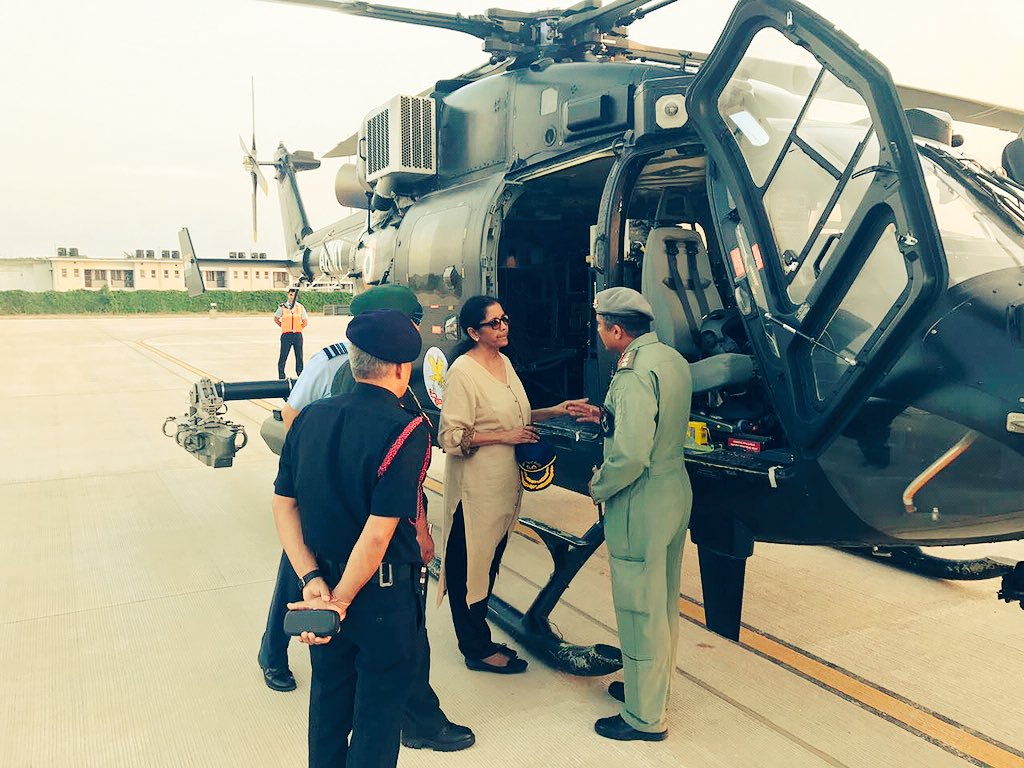
On September 11, 2017, exactly a week after she assumed office as India’s new defence minister, Nirmala Sitharaman arrived at the Naliya air base in Gujarat. While being given a tour of equipment and aircraft on site, she paused at a pair of HAL-built Rudra armed helicopters parked there. In the course of that conversation, she asked the officer assigned for the briefing if the Indian Army was happy with the said piece of equipment. It is understood that the minister was told that the helicopter was a wonderful piece of equipment — but lacked virtually all of its intended weapons.
Well, here’s the truth. The HAL Rudra doesn’t have most of its weapons despite an arming effort that technically began 17 years ago in 2002. Bear with us as we start at the beginning.
In 2002, in the backdrop of the Kargil war, HAL floated a competitive tender for an air-to-air missile and appropriate launcher for an under development iteration of the Dhruv, that would ultimately become the Dhruv Mk.4, then Dhruv-Weapon Systems Integrated (WSI) and finally, Rudra. Following a process that included technical and field evaluation tests, European firm MBDA’s Mistral missile was selected. In 2006, four years after the process began, MBDA was awarded a contract to integrate and supply the air-to-air Mistral (ATAM) launcher. Integration of the ATAM launchers commenced thereafter on a number of airframes.
In 2014, the government issued a request for proposal (RfP) for the actual Mistral missiles, a requirement of over 400 missiles to arm at least 50 Rudra helicopters. This was necessarily a single vendor RfP since the 2006 ATAM contract award was based on the Mistral being competitively chosen — the two go together, and the ATAM cannot launch a different weapon (The LCH airframes began getting their ATAM launchers in 2015-16).
In August 2016, while negotiations continued between the Indian MoD and MBDA, HAL floated a new tender to select a new air-to-air missile for the Rudra and LCH — obviously this would also involve a new launcher. While interest was shown from Russia’s Igla once again and the U.S. Stinger (a weapon system on the Boeing AH-64E Apaches for the IAF), this didn’t move forward given that the Rudra and LCH, as mentioned above, had already been integrated with the Mistral-specific ATAM launchers — and reversing the situation by dismantling and removing the said launchers would involve signficant cost, quite apart from what was spent in the integration already.
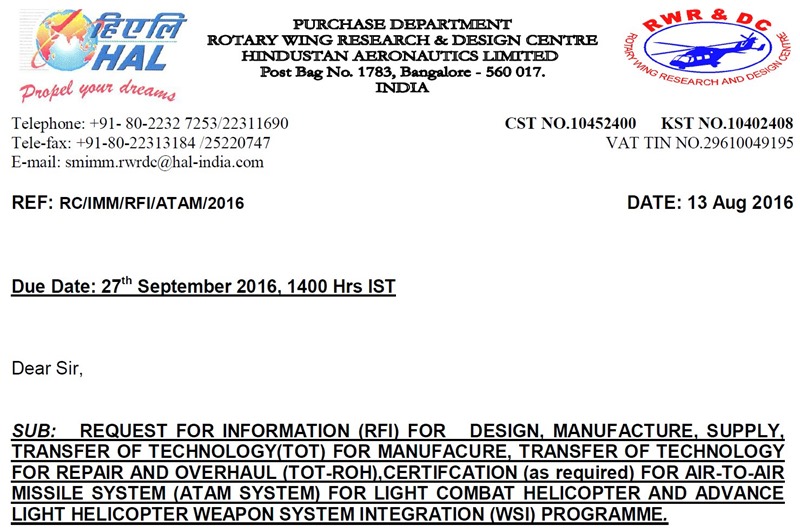
Either way, the tender was seen as a possible pressure tactic — not untypical in Indian procurement — but may have also been a warning bell for what was to come just two years later.
The procurement negotiations of the Mistral missiles remained stalled for over four years until July 2018 when the Ministry of Defence summoned MBDA to inform them that their commercial package was simply too expensive. HAL, which wasn’t involved in the missile procurement process, remained a helpless spectator, wondering how the MoD could deem a commercial offer expensive when the Mistral was chosen in 2004-05 based on known cost specifics and a pre-agreed generic escalation formula.
HAL sources familiar with the procurement process tell Livefist the benchmarking of price for the Mistral missile was questionably low, considering that cost specifics had been known and predictable from at least as far back as 2007, and likely earlier. Additionally, the quotes on the Mistral missiles were comparable to missile costs stipulated in another major procurement contest, the VSHORADS missile bid. The benchmarking discrepancy, an MoD source said, was as much as 60 per cent. The HAL sources cited above said there was reason to wonder if someone was trying to ‘derail’ the procurement of missiles for the Rudra and Light Combat Helicopter, considering that the price benchmarking discrepancy was so inordinately high. The floating of a second RFI in 2016, the source suggests, was to apply routine pressure during negotiations.
Faced with a demand for a discount, sources say MBDA reworked its commercials, returning to the MoD with a lowered cost package in August 2018 — an offer that stands valid till the end of June this year. That gives the Indian government four months before it needs to take a decision, considering that the Army’s Rudras (and Light Combat Helicopter prototypes) all sport the Mistral-specific ATAM launcher that have been procured and integrated at significant cost — and because it is unclear if MBDA will be in a position to extend the validity of its bid without a cost escalation beyond June.
So that’s where things stand now — a four month deadline that stretches into India’s election season, a factor that adds another element of unpredictability on whether a deal can or will be concluded. Meanwhile, in August 2018, HAL ordered a second batch of an unspecified number of Mistral-specific ATAM launchers for the Rudras it was continuing to build for the Indian Army. The Army currently has nearly 40 Rudras across three operational squadrons, with plans to raise four more squadrons for a total fleet of 78 helicopters.
MBDA declined comment, but said it expected to hear soon from the MoD on forward movement.
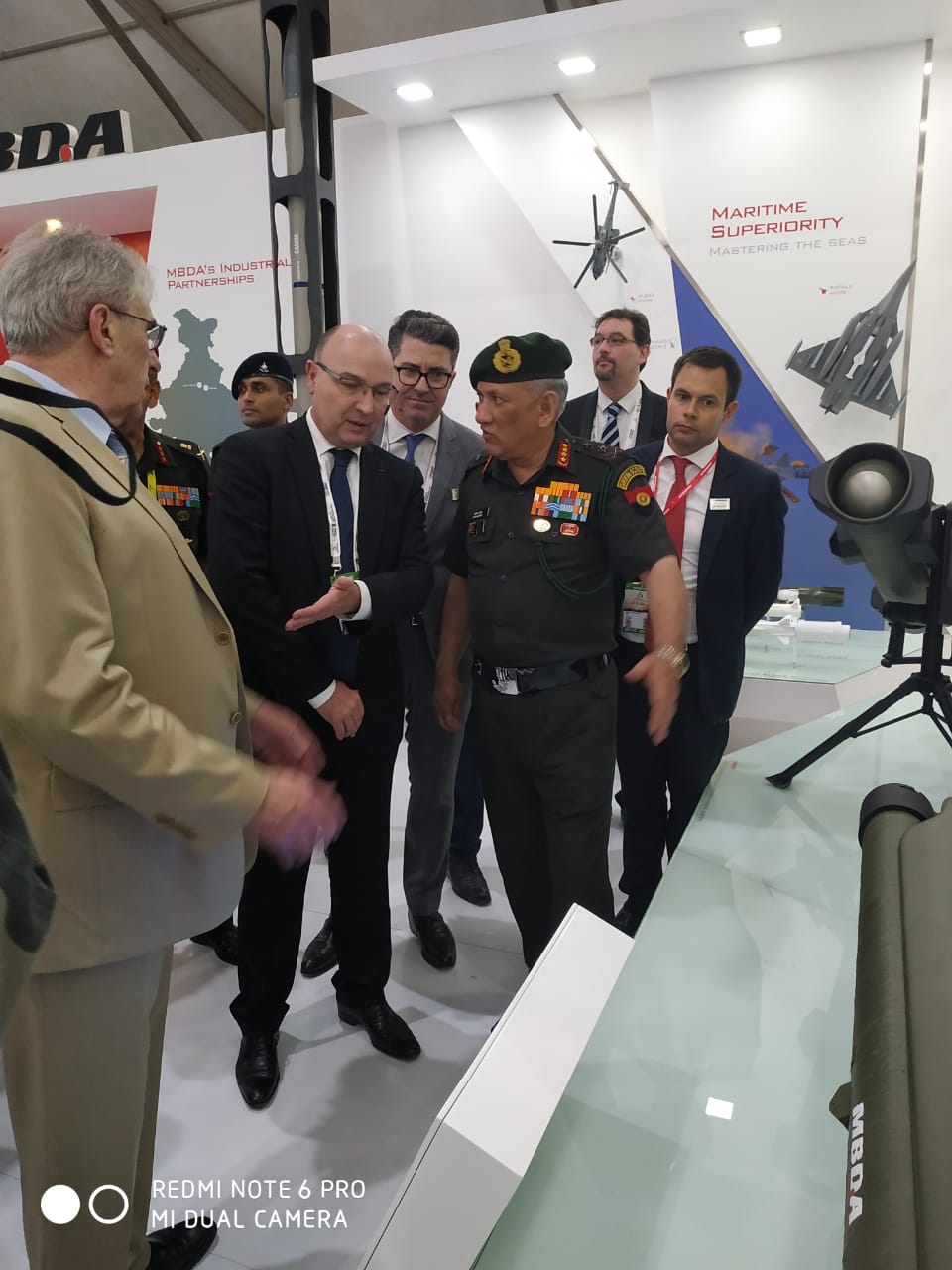
Indian Army chief General Bipin Rawat who visited MBDA’s stand at the Aero India show on Wednesday (photo above) is likely to have been briefed on the situation. But it was a short distance away at the Army’s Aviation Corps stand that a truly ironic poster dominated the space:

The truth is, the Army’s Rudras are almost entirely unarmed still, with the only armament most of them sport being the chin turret-mounted Nexter M621 cannon. The future of rocket fitments on the Rudras have also reportedly been imperiled with a steep escalation in the cost of its existing stub-wing mounted 12-tube Belgian FZ231 rocket launchers deploying 48 70mm FZ-90 unguided rockets, forcing the Indian Army to look to the state-owned DRDO for a new rocket solution.
Rockets and air-to-air missiles aside, the Rudras lack their most critical piece of weaponry — an anti-tank guided missile. While the indigenous HELINA is currently under test on twin-rail Dhruvastra launchers fitted on a handful of Rudra airframes, the Indian Army has said repeatedly, including earlier this year, that while it had asked the DRDO for a composite rocket/missile solution for the Rudra and LCH, it would need to import some systems for the fleet as it stands as an interim measure. But even on that front, things have remained inert. Despite a stated requirement for 124 ATGM launchers and 1,362 missiles to either MBDA or Israel’s Rafael Defence for the PARS L3 or Spike ER respectively, there has been no forward movement.
The HELINA missile has impressed the Army with its capabilities, so the future of the system appears set. After many years in trials, the Indian Army was cleared last year to procure the land-based foundational variant of the HELINA, called Nag.
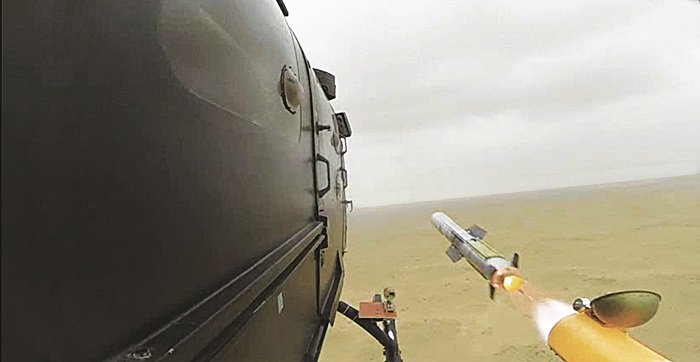
In addition to the HELINA, the DRDO says it is also developing a 12-km extended range version called the SANT (stand-off anti-tank) for the Mi-35. For the moment though, the Rudra remains armed but weaponless.
Update @ 1.37pm: Five hours after Livefist’s report went up, HAL and Thales have just announced a contract with Thales to supply new rocket launchers for 18 Rudras and 15 Light Combat Helicopters. Statement out a short while ago:
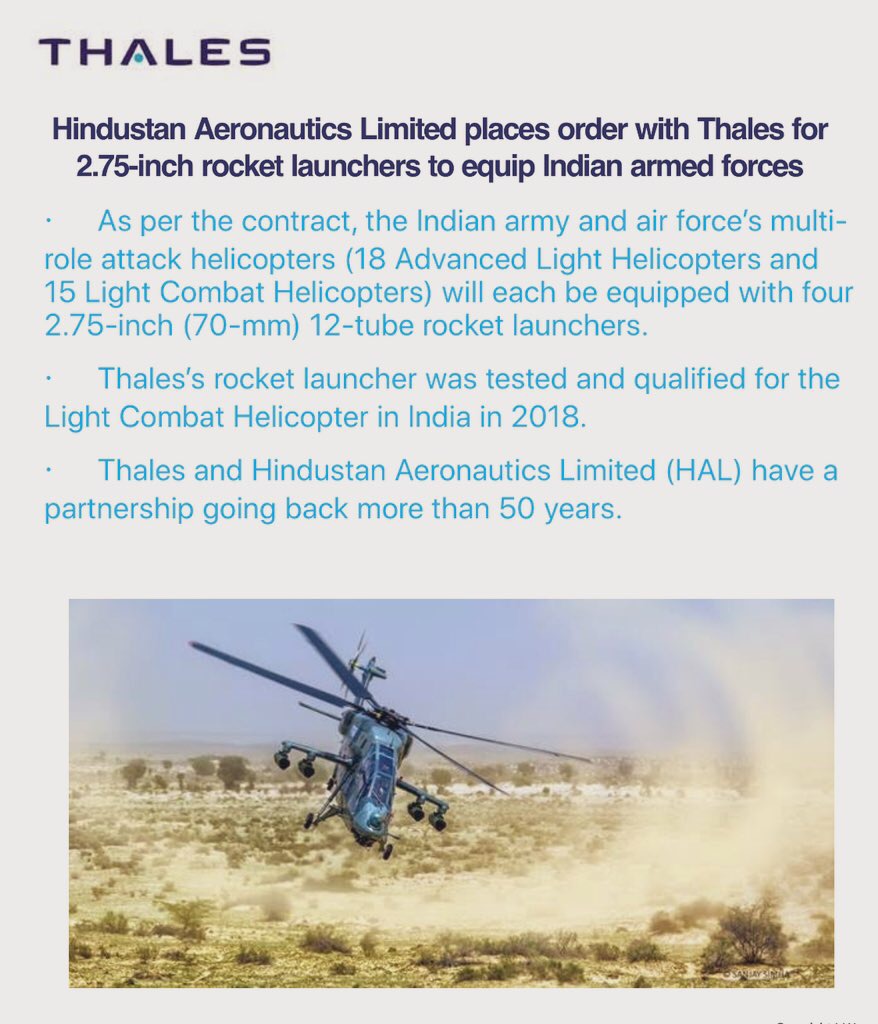

India is actually fighting a three front war: Pakistan, China and DRDO/HAL
This has been the case every since DRDO came into being. It produces nothing and holds hostage other arms procurement. Why do our politicians tolerate this is a mystery.
No friendly fire please. We have literally had no push from any party to use our own weapons except the occasional brilliant administrator or SA trying to push for desi weapons. Weapons like anything to do with science take time especially when you want want the start of the art weapons that companies working in the field for 50 or more yrs produce. As is the case, we need all parties to step up – for DRDO/HAL to shed their “Govt Undertaking” image and for the IA/IN/IAF to take calculated risks – case in point being the stop-gap Rafale purchase. Ultimately there is nothing comparable to indigenous capability not just for security reasons but for the MilInd capability and the scientific progress that it brings with.